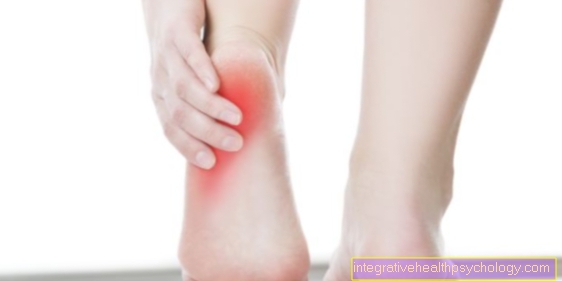Treadmill analysis
Synonyms in the broadest sense
Treadmill analysis, running style advice, running diagnostics, running advice
introduction
The wrong running style is often the cause of orthopedic complaints in the foot, knee and hip joint. Everyone runs with an individual running technique that deviates more or less from an optimum.
It is practically impossible to change the running style, as the running style is automated in the course of life. The right footwear, possibly orthopedic shoe insoles or stabilizers in the ankle, however, allow maximum compensation for anatomical misalignments of the feet. A treadmill analysis enables irregularities in running behavior to be made visible by means of visual measurements in order to initiate compensatory measures if necessary. In a serious running analysis, dynamic maximum pressure points are also measured on the sole of the foot in gait and running behavior.
This allows Overpronation or Supinations (Position of the foot when rolling) can be recognized.
Determining the CoP (center of gravity) enables imbalances in right-left behavior to be identified. Different stride lengths and an inharmonious gait or running pattern are often due to a misalignment of the spine.
Rotational malpositions of the feet (internal rotation - "walking over the great uncle" - or external rotation malpositions - "Charlie Chaplin - walking") can be determined to the extent.
Advantages / goals
Goal one Treadmill analysis is the determination of the individual running style. By measuring the foot pressure you can Forefoot runners, metatarsals and Hindfoot runner be distinguished from each other. The running analysis can be used both as a diagnostic method for existing orthopedic problems and as a preventive measure. Diseases like arthrosis in the big toe joint (Hallux rigidus) can be recognized early by a running analysis. The video analysis enables ankle positions to be recognized when the foot is raised.
execution

To the extent of a Treadmill analysis belong:
- Stand analysis
- Gait analysis
- Running analysis
The analysis while standing enables the static weight distribution to be determined.
As a rule, the athlete stands for at least 20-30 seconds as calmly as possible without moving on a pressure plate. Deviations in the anatomy of the soles of the feet (Arches foot, Flat foot, Arches, splayfoot, Buckle foot) can be displayed visually. The weight distribution should ideally be 50% on the left and 50% on the right. Deviations can indicate a misalignment of the Spine Clues. Forefoot and rearfoot distribution is ideally 1/3 to 2/3.
During a running or gait analysis, the athlete should run for a few minutes on the treadmill to get used to the running behavior. This is followed by several measurements at different speeds, barefoot and with shoes. When using video analysis, the running behavior as well as the footrest, ankle position, knee position and hip position should be observed. Particularly the behavior of the ankle when the foot is raised requires special observation.
The evaluation is then carried out using software. Maximum pressure points can confirm the observations. Stride length comparison, step time comparison and body center of gravity enable precise representation of the running style. In the event of deviations, the options for correction should then be presented.
target group

As already mentioned, athletic beginners and runners with existing complaints are the main target group of a running analysis. Even athletes who run a lot like in preparation for one marathon a running analysis is advisable.
However, since the analysis also includes preventive aspects, it is in principle advisable to every runner.





























